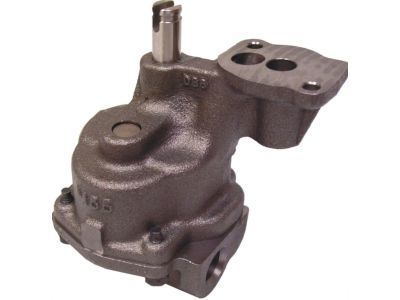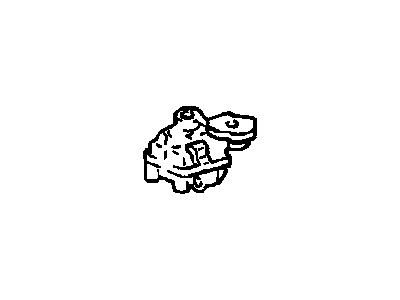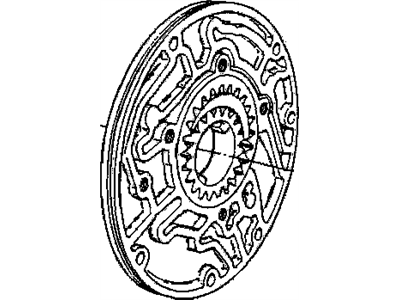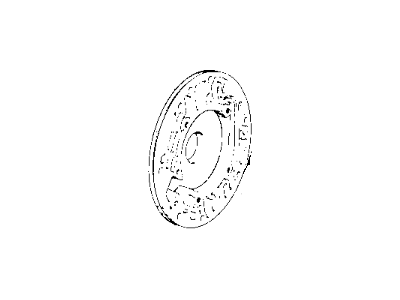
My Garage
My Account
Cart
Genuine 1986 Chevrolet El Camino Oil Pump
Oil Fluid Pump- Select Vehicle by Model
- Select Vehicle by VIN
Select Vehicle by Model
orMake
Model
Year
Select Vehicle by VIN
For the most accurate results, select vehicle by your VIN (Vehicle Identification Number).
5 Oil Pumps found
1986 Chevrolet El Camino Pump,Oil
Part Number: 93427692$126.47 MSRP: $201.71You Save: $75.24 (38%)Ships in 1-3 Business DaysProduct Specifications- Other Name: PUMP, Engine Oil Pump; Oil Pump, Pump Assembly
- Replaces: 12555884, 03848907, 3848907, 12555284
- Item Weight: 3.20 Pounds
- Item Dimensions: 7.2 x 4.5 x 4.4 inches
- Condition: New
- Fitment Type: Direct Replacement
- SKU: 93427692
- Warranty: This genuine part is guaranteed by GM's factory warranty.
- Product Specifications
- Other Name: PUMP, Engine Oil Pump; Oil Pump
- Item Weight: 4.60 Pounds
- Item Dimensions: 11.3 x 6.4 x 6.4 inches
- Condition: New
- Fitment Type: Direct Replacement
- SKU: 22524583
- Warranty: This genuine part is guaranteed by GM's factory warranty.
- Product Specifications
- Other Name: BODY, Transmission Oil Pump
- Item Weight: 7.20 Pounds
- Condition: New
- Fitment Type: Direct Replacement
- SKU: 8638922
- Warranty: This genuine part is guaranteed by GM's factory warranty.
- Product Specifications
- Other Name: BODY, Transmission Oil Pump
- Item Weight: 4.70 Pounds
- Item Dimensions: 9.5 x 10.1 x 2.6 inches
- Condition: New
- Fitment Type: Direct Replacement
- SKU: 8655985
- Warranty: This genuine part is guaranteed by GM's factory warranty.
- Product Specifications
- Other Name: PUMP, Transmission Oil Pump
- Item Weight: 10.70 Pounds
- Item Dimensions: 9.6 x 9.3 x 5.6 inches
- Condition: New
- Fitment Type: Direct Replacement
- SKU: 8655986
- Warranty: This genuine part is guaranteed by GM's factory warranty.
1986 Chevrolet El Camino Oil Pump
We are your prime source for competitively priced and high-quality OEM 1986 Chevrolet El Camino Oil Pump. We provide you with parts that will allow you to save a lot of money without sacrificing quality. All our OEM parts are backed by the manufacturer's warranty and shipped out at a swift rate.
1986 Chevrolet El Camino Oil Pump Parts Questions & Experts Answers
- Q: How to install and check the oil pump in V6 engine on 1986 Chevrolet El Camino?A: Lubricate the pressure relief valve and spring before installing them in the bore of the oil pump case, then install the cap and gasket, torquing them to specifications. Insert the oil pump gear and shaft into the oil pump body section of the timing chain cover to check the gear end clearance and side clearance by placing a straightedge over the gears and measuring the clearance between the straightedge and gasket surface, which should be between 0.002 to 0.006 inches; if it is less than 0.002, measure the gears and pocket to identify the out-of-specification component. Check the oil pump clearance, which should be between 0.0025 to 0.0050 inches; if it exceeds 0.0050, measure the gears and pocket to find the issue. Use a straightedge across the oil pump cover face to check for flatness, inserting a feeler gauge between the straightedge and the pump cover, and replace the cover with a new one if the clearance is 0.001 inches or more. If all clearances are satisfactory, remove the gears and pack the pocket full of petroleum jelly, avoiding chassis lube. Re-install the gears, ensuring that petroleum jelly is forced into every cavity of the gear pocket and between the teeth of the gears to prevent priming issues when the engine starts. Install the pump cover assembly screws, tightening them alternately and evenly, and torque-tighten to specifications. Finally, install the oil filter and check the oil level with the dipstick, monitoring the oil pressure gauge or warning light during the initial start-up and driving period, and shut off the engine to inspect all work if a lack of oil pressure is indicated.















